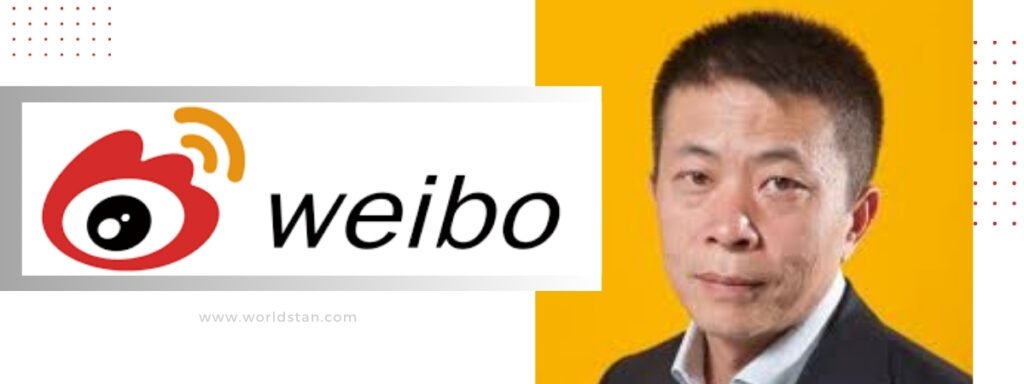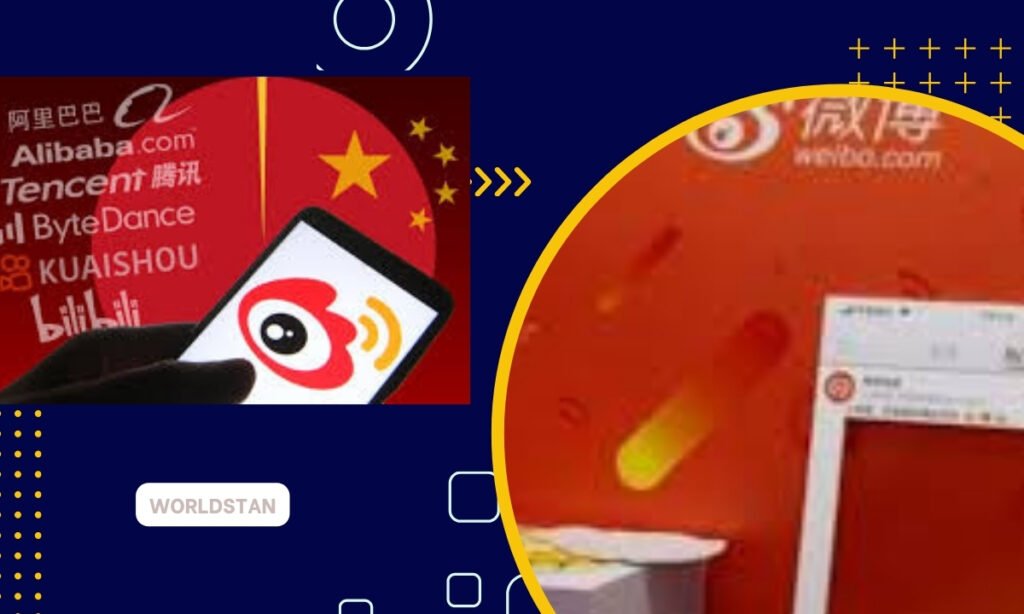Table of Contents
Toggle
- When was Sina Weibo launched, and by whom?
- What milestones did Sina Weibo achieve in terms of its user base by Q1 of 2022?
- Can you describe the spinoff and IPO process of Sina Weibo?
- When did Sina Weibo launch its International Version, and what was its aim?
- What initiatives did Weibo undertake to comply with regulatory requirements?
- Why did Weibo decide to go private again in September 2020?
- What is the significance of the name “Weibo” in Chinese, and how did it solidify its identity in 2011?
- What are some of the features offered by the Weibo platform to its users?
- Describe the demographic composition of Weibo’s user base.
- How does celebrity presence contribute to Weibo’s cultural significance?
- When did Alibaba acquire a stake in Sina Weibo, and for how much?
- What percentage of China’s microblogging market did Sina Weibo hold in March 2011?
- What is the purpose of the verification system on Sina Weibo?
- How did the ban on Chinese apps in India affect Weibo?
- Can you provide some key events in the history of Sina Weibo from its launch to January 2023?

China's Premier Microblogging Platform
Weibo:
Introduction:
Weibo, formerly known as Sina Weibo, stands as a cornerstone in China’s social media landscape. Launched by Sina Corporation in 14 August 2009, it has grown into one of the largest microblogging websites in the country, boasting an extensive user base and significant financial success.
Historical Evolution:
Launch and Growth:
Weibo was introduced to the public on August 14, 2009, by Sina Corporation. Over time, it garnered immense popularity, reaching milestones such as surpassing 582 million monthly active users and 252 million daily active users by Q1 of 2022.
Spinoff and IPO:
In March 2014, Sina Corporation decided to spin off Weibo as a separate entity, leading to its IPO under the symbol WB. The move saw Alibaba becoming a significant stakeholder in Weibo. Trading publicly began on April 17, 2014.
Global Expansion:
Expanding its reach, Sina launched the International Version of Sina Weibo in March 2017, aiming to engage a broader audience beyond China’s borders.
Strategic Initiatives:
Regulatory Adjustments:
To comply with regulatory requirements and ensure a safer online environment, Weibo suspended registrations for minors under 14 years old in November 2018. Additionally, it initiated “Project Deep Blue” in July 2019, a campaign aimed at purging pornographic and vulgar content from the platform.
Privatization:
In response to escalating tensions between the US and China, Weibo announced its decision to go private again on September 29, 2020, after being publicly traded since 2014.
User Experience and Features:
Name Significance:
“Weibo” translates to “microblog” in Chinese, reflecting its essence as a platform for succinct content sharing. The transition to the domain weibo.com in 2011 further solidified its identity in the digital sphere.
Platform Features:
Weibo facilitates various forms of content sharing, including text, images, and videos. It fosters interaction through comments, multimedia messaging, and celebrity engagements. Verification symbols distinguish authentic accounts, ensuring credibility and trustworthiness.
User Demographics:
With over 500 million registered users and 313 million monthly active users, Weibo attracts a diverse audience, predominantly college-aged individuals. Its user base is evenly split between genders, with a significant portion accessing the platform via mobile devices.
Notable Figures and Trends:
Celebrity presence, exemplified by actress Xie Na’s record-breaking follower count, contributes to Weibo’s cultural significance. Despite competition, Weibo remains the preferred social media platform among Chinese users.
Date | Event |
July 2009 | China shuts down domestic microblogging services, leading to the creation of Sina Weibo by Sina Corporation CEO Charles Chao. |
August 14, 2009 | Sina launches the tested version of Sina Weibo, offering basic functions like messaging and commenting. |
September 2009 | Introduction of basic functions including message, private message, comment, and reposting on Sina Weibo. |
July 28, 2010 | Sina Weibo launches a compatible API platform for third-party applications. |
December 1, 2010 | Website experiences an outage due to increasing user numbers and posts. |
February 2011 | Registered users surpass 100 million milestone. |
March 23, 2011 | t.cn replaces sinaurl.cn as Sina Weibo’s official shortened URL. |
April 7, 2011 | weibo.com replaces t.sina.com.cn as the new main domain name, accompanied by an updated logo. |
June 2011 | Announcement of English-language version of Sina Weibo, though content remains governed by Chinese law. |
January 11, 2013 | Strategic cooperation agreement signed between Sina Weibo and Alibaba China. |
January 2013 | Sina Weibo and NetEase.com reach cooperation agreement for language translation services. |
February 2013 | Sina Weibo’s financial report shows revenue exceeding US$66 million and registered users surpassing 500 million. |
April 2013 | Sina Weibo signs strategic cooperation agreement with Alibaba, with Alibaba acquiring 18% stake. |
April 2014 | Alibaba exercises option to acquire up to 30% stake in Sina Weibo upon its listing on NASDAQ. |
March 9, 2010 | Ai Weiwei’s posts about the 2008 Sichuan earthquake deleted, and his account closed by Sina Weibo. |
March 30, 2010 | Gigi Leung’s post about jailed activist Zhao Lianhai deleted by Sina Weibo. |
March 16, 2012 | Sina Weibo users in Beijing instructed to register with real names. |
March 31, 2012 | Comment function of Sina Weibo shut down for three days. |
May 2012 | Sina Weibo introduces new restrictions on user-posted content. |
October 2012 | Sina Weibo heavily censors discussion of Foxconn strikes. |
June 4, 2013 | Sina Weibo blocks search terms related to the Tank Man image and the Rubber Duck sculpture. |
September 8, 2017 | Weibo issues ultimatum for users to verify accounts with real names. |
February 18, 2018 | Sina Weibo introduces “Comment moderation” function. |
April 2018 | Weibo begins crackdown on anime, games, and short videos depicting sensitive content. |
June 11, 2020 | Weibo ordered to suspend “trending topics” page by Chinese authorities. |
February 22, 2022 | Horizon News accidentally posts instructions not to post anti-Russia content on its Weibo page. |
January 2023 | Sina Weibo takes action against more than 1,000 social media accounts that express criticism towards the Chinese government’s handling of the COVID-19 pandemic. |

Unraveling Ownership and User Dynamics
Ownership Dynamics:
Alibaba's Investment:
In April 2013, Alibaba Group announced its acquisition of an 18% stake in Sina Weibo for a staggering sum of US$586 million. The deal came with an option for Alibaba to increase its ownership to 30% in the future. Alibaba later exercised this option after Weibo’s listing on NASDAQ in April 2014.
User Landscape:
Dominance in the Market:
As of March 2011, Sina Weibo held a commanding share of China’s microblogging market, boasting 56.5% of active users and 86.6% of browsing time, outpacing competitors like Tencent Weibo and Baidu. The platform’s influence is underscored by the fact that the top 100 users collectively amassed over 485 million followers.
Diverse User Base:
Sina Weibo’s user base encompasses a wide array of demographics and interests, including Asian celebrities, movie stars, singers, prominent business and media figures, athletes, scholars, artists, and government officials from various regions such as Hong Kong, Mainland China, and Taiwan. Notable international figures and organizations, including political leaders like Narendra Modi and Boris Johnson, also have a presence on the platform.
Verification System:
Similar to Twitter, Sina Weibo operates a verification program to authenticate accounts of well-known individuals and organizations. Verified accounts are distinguished by a verification badge displayed alongside the account name, enhancing credibility and trustworthiness.
User Growth:
By Q1 of 2018, Sina Weibo’s active user base surged past 400 million, cementing its position as the 7th platform globally to achieve this milestone. Daily usage witnessed a notable uptick, signaling sustained engagement and relevance among users.
Government Intervention and Global Impact:
Ban in India:
In June 2020, Weibo faced the repercussions of geopolitical tensions as it was among the 59 Chinese apps banned by the Indian government. The ban resulted in the deactivation of prominent accounts, including that of Prime Minister Narendra Modi, highlighting the platform’s entanglement in broader geopolitical dynamics.
Conclusion:
In conclusion, Weibo has evolved from its inception in 2009 to become a cornerstone of China’s social media landscape. With its launch by Sina Corporation, Weibo quickly gained popularity, boasting millions of monthly and daily active users by 2022. The platform’s strategic initiatives, including regulatory adjustments and privatization, have ensured its adaptability and resilience in the face of challenges. Weibo’s user experience, diverse user base, and notable figures have contributed to its cultural significance, making it the preferred social media platform among Chinese users. Despite facing government interventions and geopolitical tensions, Weibo remains a pivotal player in China’s digital ecosystem, shaping discourse and connectivity both regionally and globally. Its historical evolution and continued growth underscore its enduring significance in the realm of microblogging and social media.
FAQs:
- What is Weibo, and when was it launched?
- Weibo, initially known as Sina Weibo, is a leading microblogging website in China, launched by Sina Corporation on August 14, 2009.
- How did Weibo’s user base grow by Q1 of 2022?
- By Q1 of 2022, Weibo’s user base had grown to surpass 582 million monthly active users and 252 million daily active users.
- What significant corporate action did Sina Corporation take regarding Weibo in March 2014?
- In March 2014, Sina Corporation spun off Weibo as a separate entity, leading to its IPO under the symbol WB, with Alibaba becoming a significant stakeholder.
- What was the goal behind launching the International Version of Sina Weibo in March 2017?
- The goal was to expand its reach and engage a broader audience beyond China’s borders.
- What measures did Weibo take to comply with regulatory requirements?
- Weibo suspended registrations for minors under 14 in November 2018 and launched “Project Deep Blue” in July 2019 to purge inappropriate content.
- Why did Weibo decide to go private again in September 2020?
- The decision was a response to escalating US-China tensions.
- What does the name “Weibo” signify, and what are its main features?
- “Weibo” translates to “microblog” in Chinese, offering features like text, image, and video sharing, comments, multimedia messaging, and celebrity engagements.
- What is the demographic makeup of Weibo’s user base?
- Weibo’s user base is predominantly college-aged, with an even gender split and significant mobile access, exceeding 500 million registered users.
- How did Alibaba’s investment in Weibo evolve?
- In April 2013, Alibaba acquired an 18% stake in Sina Weibo for US$586 million, later increasing its ownership to 30% after Weibo’s NASDAQ listing in April 2014.
- What impact did the ban in India have on Weibo?
- The June 2020 ban by the Indian government led to the deactivation of prominent accounts, including Prime Minister Narendra Modi’s, due to geopolitical tensions.
- How has the Chinese government’s interventions affected Weibo’s operations?
- Interventions have included censoring discussions, deleting posts, requiring real-name registrations, and suspending certain platform features, reflecting the platform’s navigation through regulatory landscapes.
- What challenges and changes has Weibo faced due to government censorship and policy adjustments?
- Weibo has implemented content restrictions, real-name verification, and comment moderation functions while also dealing with temporary suspensions of features to comply with government directives.

Prof. Mian WaqarAhmad
Prof. Mian Waqar Ahmad, a dynamic force straddling the realms of academia and digital media. As a distinguished Lecturer in Information Sciences, he imparts knowledge within the academic sphere, igniting the minds of his students. Beyond the classroom, Prof. Mian Waqar Ahmad dons the hat of a seasoned blogger on Worldstan.com, where his insightful posts delve into the intricacies of information sciences. His digital footprint extends even further as a YouTuber, leveraging the platform to share his expertise and make complex concepts accessible to a global audience. Prof. Mian Waqar Ahmad’s journey embodies the fusion of traditional education and contemporary digital outreach, leaving an indelible mark on the evolving landscape of information sciences. Explore his world at Worldstan.com and witness the convergence of academia and the digital frontier.
